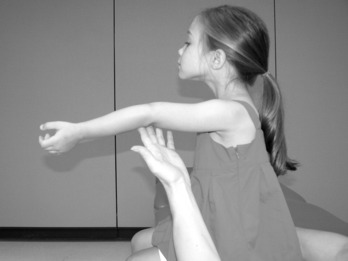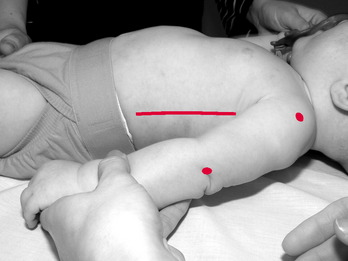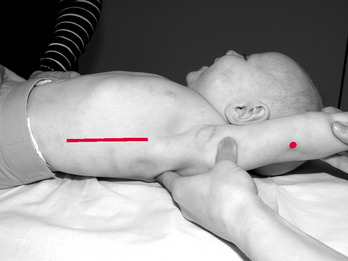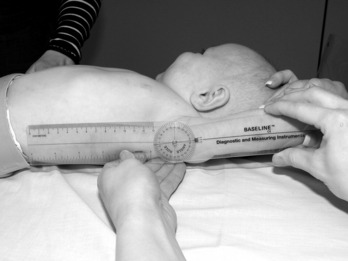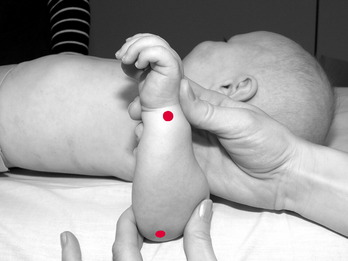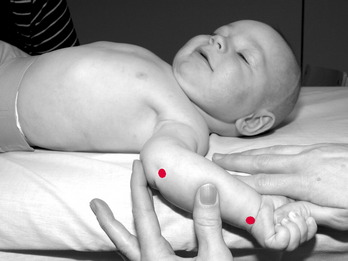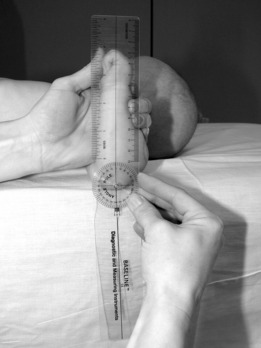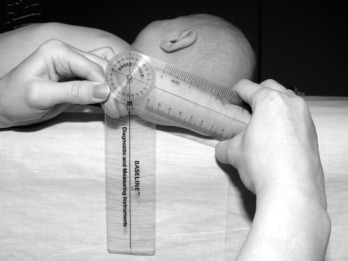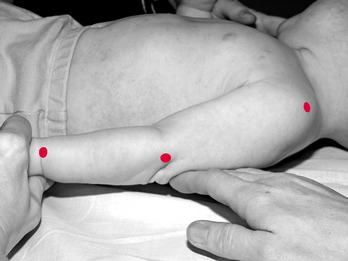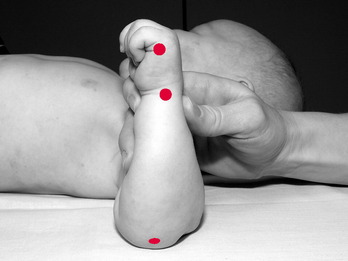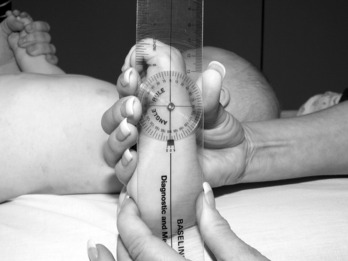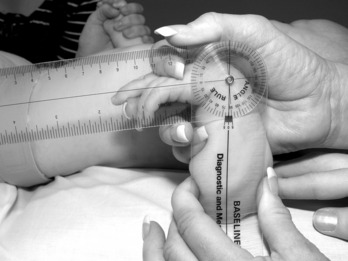Chapter 16 Range of motion of many upper extremity joints appears to differ in infants and young children compared with adults (Table 16-1). Measurements reported in a study of more than 300 Japanese infants and children from birth to 2 years of age demonstrated an increased range of shoulder extension and lateral rotation, forearm pronation, and wrist flexion, along with a decreased range of elbow extension, in this age group compared with adults.19 The amount of shoulder lateral rotation present in the neonate appears to decrease as the child ages, with the range of shoulder rotation approaching adult levels by the age of 2 years (Table 16-2). As a child ages, elbow extension range of motion also changes to approach adult levels, but more quickly than does the range of shoulder lateral rotation. Table 16-2 Upper Extremity Motions Demonstrating Significant Change In Amplitude During The First 2 Years* The limitation in elbow extension seen in the neonate appears to resolve by the age of 3 to 8 months (see Table 16-2),11,19 progresses to hyperextension in many children by the age of 2 to 3 years,5,19,21 (Fig. 16-1) and then gradually resolves to adult levels. A limitation in shoulder abduction also has been reported in neonates, but by only one investigator on a fairly small sample of subjects.11 The limitation in shoulder abduction had disappeared in these infants by 3 months of age. We have not included techniques for every joint of the upper extremity, because the focus of the chapter is to examine changes in the pediatric population compared with the adult. The techniques that are included focus on joints with an increased or decreased range of motion and alternative positions that are used compared with those used for the adult. Please reference the adult chapters for alternative positioning or joints or movements that have not been included. As in the adult, follow standard procedures for measuring range of motion that have been outlined in Chapter 1.
PEDIATRIC RANGE of MOTION
UPPER EXTREMITY RANGE OF MOTION
AGE
SHOULDER LATERAL ROTATION
ELBOW EXTENSION
Birth (n = 62)
134°
−14°
2-4 weeks (n = 57)
126°
−6°
4-8 months (n = 54)
120°
0°
8-12 months (n = 45)
124°
1°
1 year (n = 64)
116°
3°
2 years (n = 57)
118°
5°
TECHNIQUES OF MEASUREMENT: UPPER EXTREMITY





